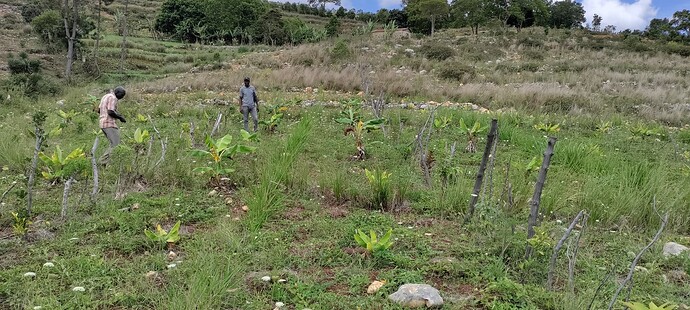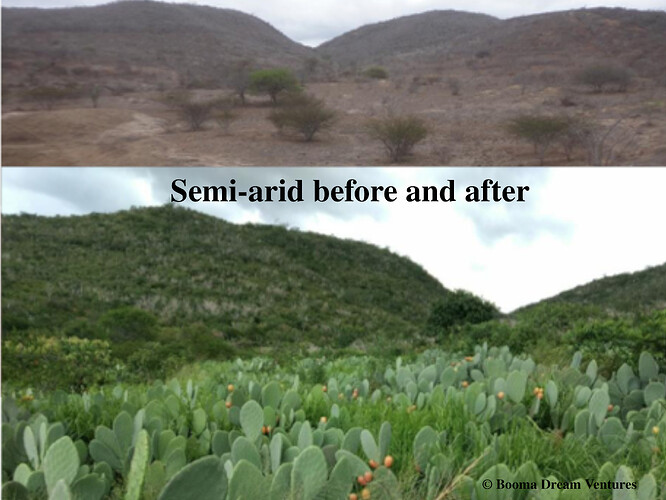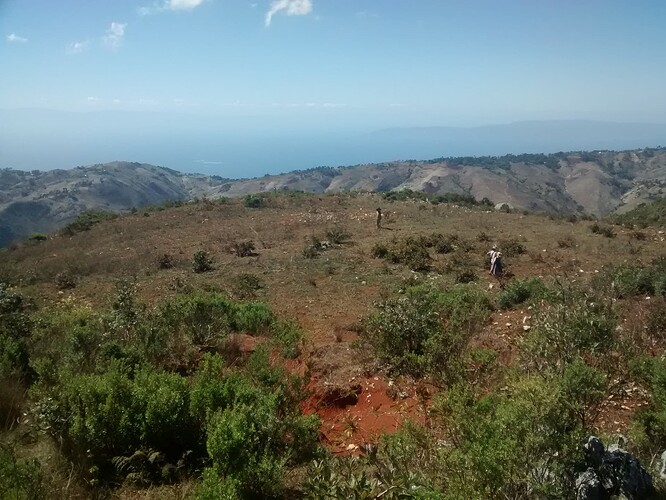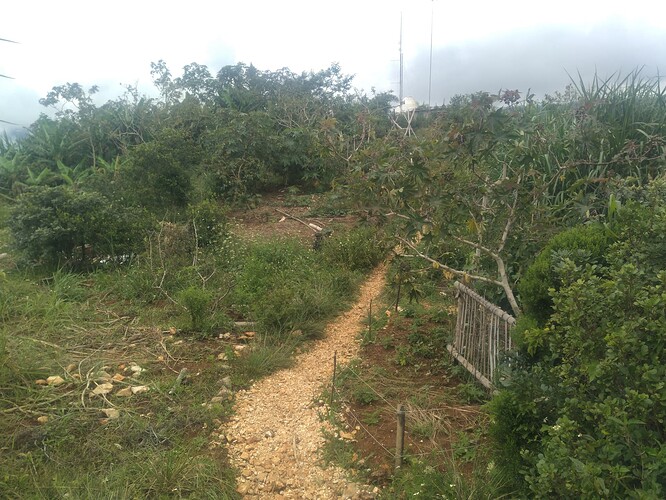Much of the land where we live in the mountains of Haiti is badly degraded from years of mismanagement. We have much appreciated some ideas we have found in various resources on conservation agriculture, agroforestry and syntropic agriculture. A central theme of these systems seems to be increasing soil organic matter by increasing biomass production. However much of the practical advice we have seen seems to assume soil that isn’t in too bad a shape. When we started restoring the land for our demonstration farm here, we found a lot of the ideas we found (for example, in Roland Bunch’s book Restoring the Soil) did not work so well right away. As we are continuing to learn, it appears that there is some upfront work needed before some of the common green manure ideas can work well. We had soil that was so bad when we started that even Jack beans barely gave back the seed we planted. Now they are thriving. We invested a lot of effort in planting lablabs but most of them did poorly until the soil was a bit better. This is even with using commercial available innoculum.
I think it would be helpful to have some techniques for initial restoration of very badly degraded soil. The best I’ve seen here so far is probably planting Napier/Elephant grass and then cutting it down for mulch. I’ve seen biomass transfer mentioned in a recent ECHO technical note. I’ve been thinking about this and how best to restore land. If someone has productive land nearby to transfer biomass off of then that seems a reasonable option but what if only the land to be restored is considered and what if that land is all poor and not producing much biomass?
That leads me to a question I have that I think would be a very good research question if it hasn’t already been studied. That is, does the biomass production of badly degraded land grow linearly or non-linearly as the land is restored? For example, if we consider one square meter of land, will the number of kilograms of biomass that land can produce each year as he land is fallowed be something like 1 kg, 3 kg, 5 kg, 7 kg, etc. or more like 1 kg, 3 kg, 8 kg, 20 kg, etc.
We know that fallowing land works but is slow. We now that planting certain species of plants can shorten fallowing times. But my question of linear vs. non-linear biomass production relates to the strategy of how to allocate the land being restored. If biomass production increased linearly as land was fallowed then it would make sense to not do biomass transfer from one part of the land to another as you would just slow down the recovery of the section you are taking biomass from by a similar amount as you would speed up the recovery of the section you are transferring the biomass to which would mean your work had no net benefit. However, if biomass production initially increased exponentially (for example) as soil organic matter increased, then it might make sense to work to restore a part of the land first by transferring all or most of the biomass produced in the whole land to that one section and then when that section was healthy and producing biomass well to use that now much increased biomass to transfer to the next section to be restored.
Does anyone here have any experience with this question and how to do initial land restoration most rapidly (assuming external inputs are not available)? @Roland_Bunch and @Roger_Gietzen do you have any thoughts on this?



